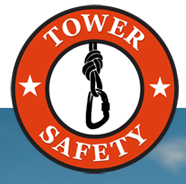This course provides a realistic approach to safety in and around confined space entries and accountability of the roles of the entrant, attendant, and supervisor.

1 in 1400 industrial accidents results in serious injury; 1 in 10 confined space accidents results in serious injury. 60% of all confined space deaths are to would-be rescuers. Approximately 80% of all confined space fatalities happened in space that were deemed safe to enter.
This course provides a realistic approach to safety in and around confined space entries and accountability of the roles of the entrant, attendant, and supervisor.
Entrant, Attendant, Supervisor (CSEAS)
General knowledge of confined spaces and the ability to identify permit required confined spaces, and recognize hazards. 1 day of training.
Rescue Operations
When completed, the participant of this class should have a working knowledge needed for a confined space rescuer compliant with OSHA 1910m146(k), including:
Syllabus:
Our cell tower instructors have installed, rigged, climbed towers and worked in the wireless industry for over 25 years.
Tower Safety ™ understands the hazards a tower crew may face and we instruct the students to.
Prepare, plan, and practice! Tower Safety ™ and Instruction training focuses on additional tower climbing and equipment rigging techniques, trusting your gear, and the responsibility of being safe.
Tower Safety is your Training and Workplace Safety Solution.
We Stand for Workplace Safety by providing training that empowers individuals. This enables our trainees to do whatever it takes to return home safe EVERY DAY. For those they care about and for those who love them. Our training challenges clients to Think About, Act On, and Value Safety in ways that impact their lives.
LEARN – Being aware of unsafe conditions and acknowledging potential hazards.
LEAD – Inspiring and coaching co-workers to perform safely
LIVE – Taking action and making necessary changes.
© 2025 coursetakers.com All Rights Reserved. Terms and Conditions of use | Privacy Policy